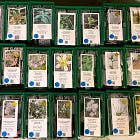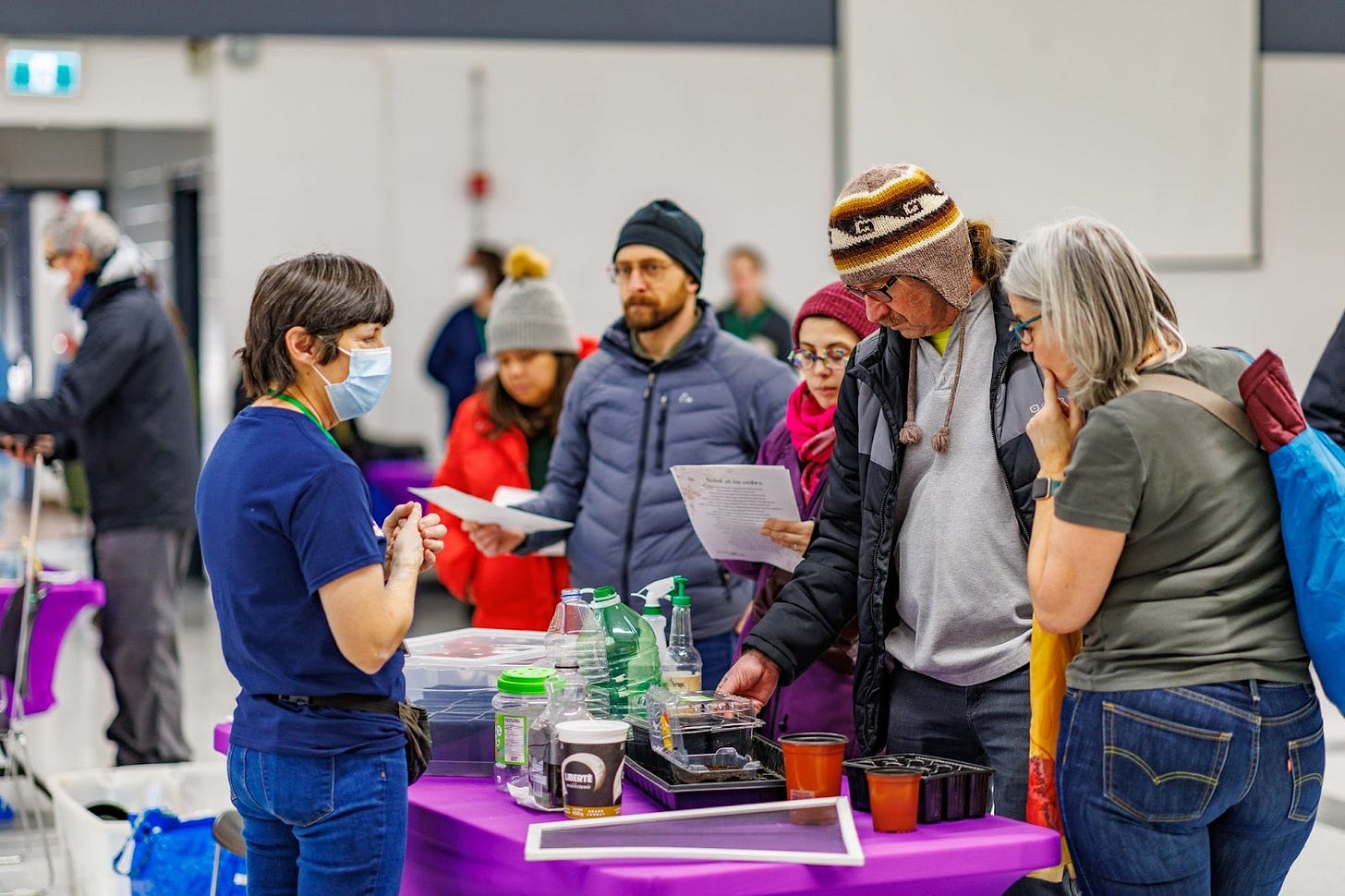How Wildflower Seed Libraries are a Model for Transformative Education
A seed distribution model pioneered in Canada’s capital is quickly making waves in the native plant and ecological gardening movement
It was a cold, but sunny mid-November day when I arrived in Orleans, a neighborhood in the Canadian capital of Ottawa, to meet Mélanie Ouellette. The founder of the Ottawa Wildflower Seed Library (OWSL) greeted me warmly at the community’s hockey arena, where a seed distribution event had just ended in one of the rooms on the second floor.
I had arrived late at the event, because of train delays. But it was no problem, as she and the volunteers of the library had delayed cleanup just so I could see how they set up the room. How generous of them, I thought.
This room was the setting for a seed distribution event just minutes ago, one of Mélanie’s inventions. Since 2020, when she started from modest beginnings, she went from one table to ten. She went from people’s driveways to parks, to rented rooms in community centers and arenas.
The aforementioned tables all have a purpose. If you look at each one of them, outlined in the article I wrote in the past about this model, they’re not only to display and distribute seeds, but also to receive donations, be they monetary or botanical in nature.
Yes, the way of this seed library is reciprocity. Just like Robin Wall Kimmerer outlined in her book Braiding Sweetgrass, and later in The Serviceberry, which came out at the same time as my trip. It’s all because the OWSL is founded on values held in common by the people of this land. As Kimmerer mentioned in that last book, the Haudenosaunee are holding sacred for centuries the first known sustainability policy, the Dish with One Spoon. And by Mélanie’s own sayings, it was Kimmerer herself who inspired the creation of the OWSL.
I was there to learn more about how to establish one of my own, in the province of New Brunswick. I also had received funding from Nature Canada, who paid for the trip. The overarching goal is to create a guide in 2025-2026 on how to establish a native plant seed library.
But what I want to highlight more than anything, is not only the potential for transformative education resulting from those initiatives, but the already-existing numbers of people educated on better gardening practices.
Here are the current numbers as of spring 2025, from the homepage of the seed library (wildflowerseedlibrary.ca) :
Since 2020, over 8,000 community projects, schools and individuals received free native seeds in Ottawa, the Ottawa valley and in five other provinces. Of these recipients were at least a dozen city schools where students were able to participate in hands-on gardening with native plants. In addition to seeds, more than 1,700 community projects, schools and individuals have received free native plants in the last two years. The Seed Library disseminates accessible scientific information related to good ecological practices and tools on harvesting native seeds, through an impressive social media presence and through presentations throughout our city. Since 2023, 10,600 individuals have received information on the importance of native plants in ecosystems.
To say the least, through its workshops, seed-packing events, and collaborative learning model, OWSL nurtures a deeper understanding of ecological sustainability, as it equips people with the seeds they need to make a tangible impact. The model encourages a shift in mindset, where gardening is now about supporting pollinators, restoring habitats, and contributing to the fight against climate change. In this way, Ottawa stands as a model for how small, community-driven initiatives can spark meaningful transformation. The OWSL proves that education is most powerful when it’s action-oriented. By sowing the seeds—both figuratively and literally—of ecological restoration and knowledge, this new model based on not-so-new ideas is cultivating a better future for all of us.
I was also able to distribute to my community coming back, thanks to Ottawa’s generous seed donations. Which, I hope, is going to help me kickstart my own. You can follow my progress on my Substack here.
I’m thus going to leave you with a question, which you can answer below if you want:




